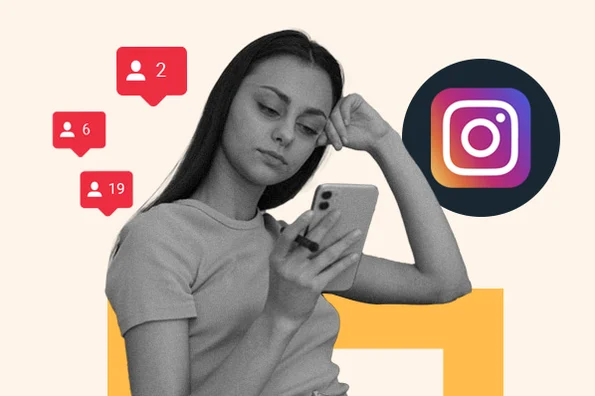Gen Z, AI, and the Power of Creator Marketing
As AI reshapes marketing, the next generation of decision-makers is placing more trust in creators than in brands. Here’s how to use creator marketing strategies to keep your business relevant.

As AI reshapes marketing, the next generation of decision-makers is placing more trust in creators than in brands. Here’s how to use creator marketing strategies to keep your business relevant.
Marketing strategies evolve with the technological shifts of each era, continuously redefining how businesses connect with consumers.
In the early days of the internet, outbound marketing tactics like billboards and direct mail were the go-to approach. Then came Google and social media, giving rise to inbound marketing platforms like HubSpot.
Now, we’re entering a new and highly disruptive cycle, this time driven by AI.
This early ‘discovery’ phase — which Kieran and I anticipate will last 5-7 years before stabilizing — is marked by rapid innovation and an overwhelming influx of fragmented AI tools.
But the real challenge isn’t just about keeping pace with AI; it’s about understanding how to connect with a new generation of decision-makers — particularly Gen X and Gen Z — while everything else is changing. But how?
As discussed in a recent episode of Marketing Against the Grain, we believe that the answer lies in creator-led marketing. Here’s why — and how you can get started today.
Why the New Generation of Decision Makers Trust Creators over Brands
As new generations step into key decision-making roles within companies, their approach to purchasing decisions is significantly different from that of their predecessors.
“Data shows that the new, younger generations rely primarily on social media and human-to-human connections when evaluating software, solutions, and other business needs,” Kieran explains.
They’re not interested in traditional brand pitches or product specs alone; instead, they seek raw insights, authentic voices, and a sense of community.
This shift underscores the need for brands to prioritize creator-centric content to connect with these new decision-makers online — especially as AI, despite its advancements, isn’t yet capable of delivering the nuanced, human-centered content that creators offer.
“It used to be that people trusted brands. Now creators have become the most trusted brands in our society.” So how do you pivot your marketing strategy?
Three Ways to Integrate Creator Marketing Strategies into Your Marketing Plan
Learn how to revamp your marketing plan by incorporating these three creator-led approaches, along with resources from HubSpot’s Free Marketing Plan Template.
1. Transform Employee Expertise into Content
One of the most underutilized, strategic content assets within companies is the deep industry knowledge of their employees. These individuals not only understand the challenges that customers face but also the intricacies of the product — insights that external agencies or third-party influencers may not have.
Identifying who these experts are within your business, and then putting them in front of a camera, is a high-impact way to turn critical knowledge into compelling, relevant video content. (Plus, video is harder to replicate with AI.)
Especially for audiences that are skeptical of overly-polished brand messaging and AI-generated content, showcasing real, human expertise elevates your brand’s authority and trustworthiness. It also adds a nice personal touch by showing the ‘faces’ behind the business.
2. Hire In-House Creators Dedicated Entirely to Content Creation
Beyond using existing in-house knowledge, a second approach is to hire new employees solely dedicated to content creation. What’s key here, however, is that these new hires are given the autonomy to focus exclusively on creating content, free from the distractions of daily operational tasks.
"Allow them to experiment at scale and function entirely like independent creators,” says Kieran. “This way, they can really learn what works — and what doesn’t — for your company by experimenting, testing, and iterating.”
By giving in-house creators the space to innovate and refine their ideas, you ensure that your content stays fresh and relevant. This strategy also enables you to harness the agility that defines successful independent creators, while still benefiting from their understanding of your business goals and brand ethos.
3. Partner with Influencers to Expand Access to Walled Gardens
As social media shifts toward ‘walled gardens,’ platforms are increasingly restricting the ability to share external links, reducing your capacity to direct traffic outside the platform.
“LinkedIn posts with external links are five to six times less effective,” says Kieran.
And X (formerly Twitter) has introduced features like private likes, hinting at a broader strategy to keep users and their interactions confined within the platform.
Partnering with external influencers offers a strategic way to maintain — or even grow — your presence on these increasingly closed platforms. Influencers have already built trust and credibility within their communities, allowing them to organically integrate your product into their content.
This enables your brand to connect with a targeted, engaged audience and increase awareness where direct marketing efforts are otherwise limited.
To watch our entire discussion about creator-led marketing, check out the full episode of Marketing Against the Grain below:
This blog series is in partnership with Marketing Against the Grain, the video podcast. It digs deeper into ideas shared by marketing leaders Kipp Bodnar (HubSpot’s CMO) and Kieran Flanagan (SVP, Marketing at HubSpot) as they unpack growth strategies and learn from standout founders and peers.
![]()
What's Your Reaction?








































.png)































![Download Now: Free Marketing Plan Template [Get Your Copy]](https://no-cache.hubspot.com/cta/default/53/aacfe6c7-71e6-4f49-979f-76099062afa0.png)












